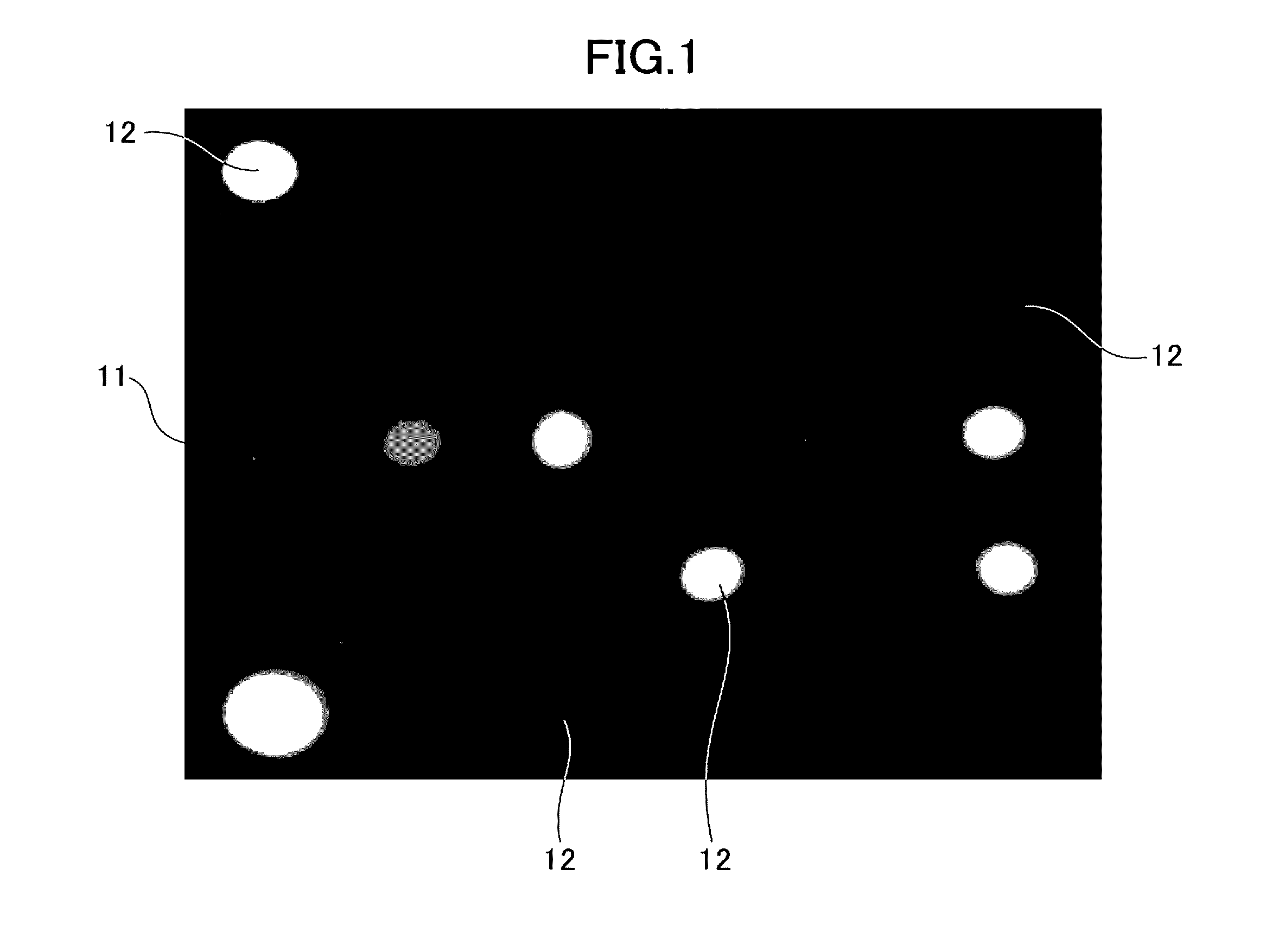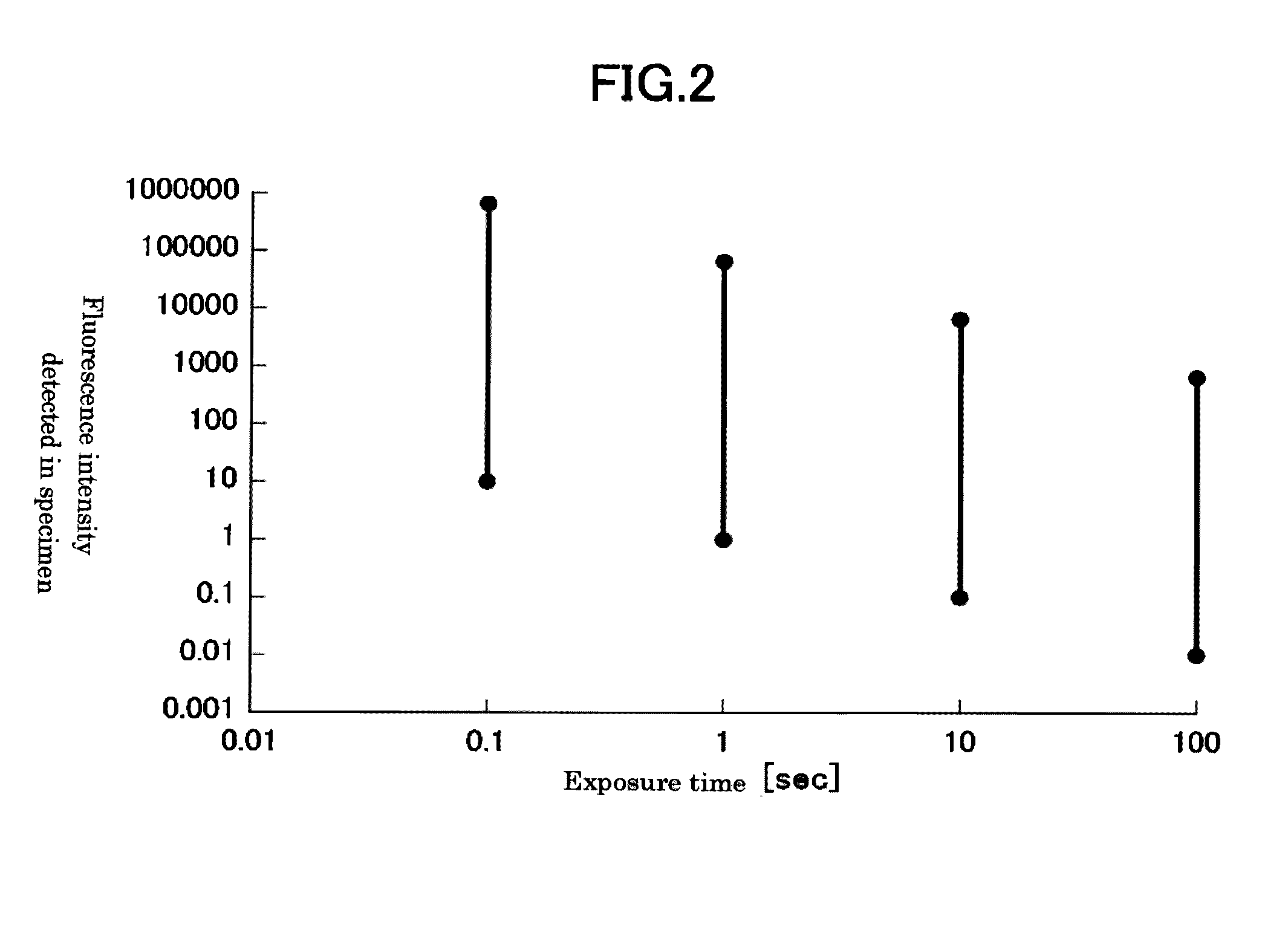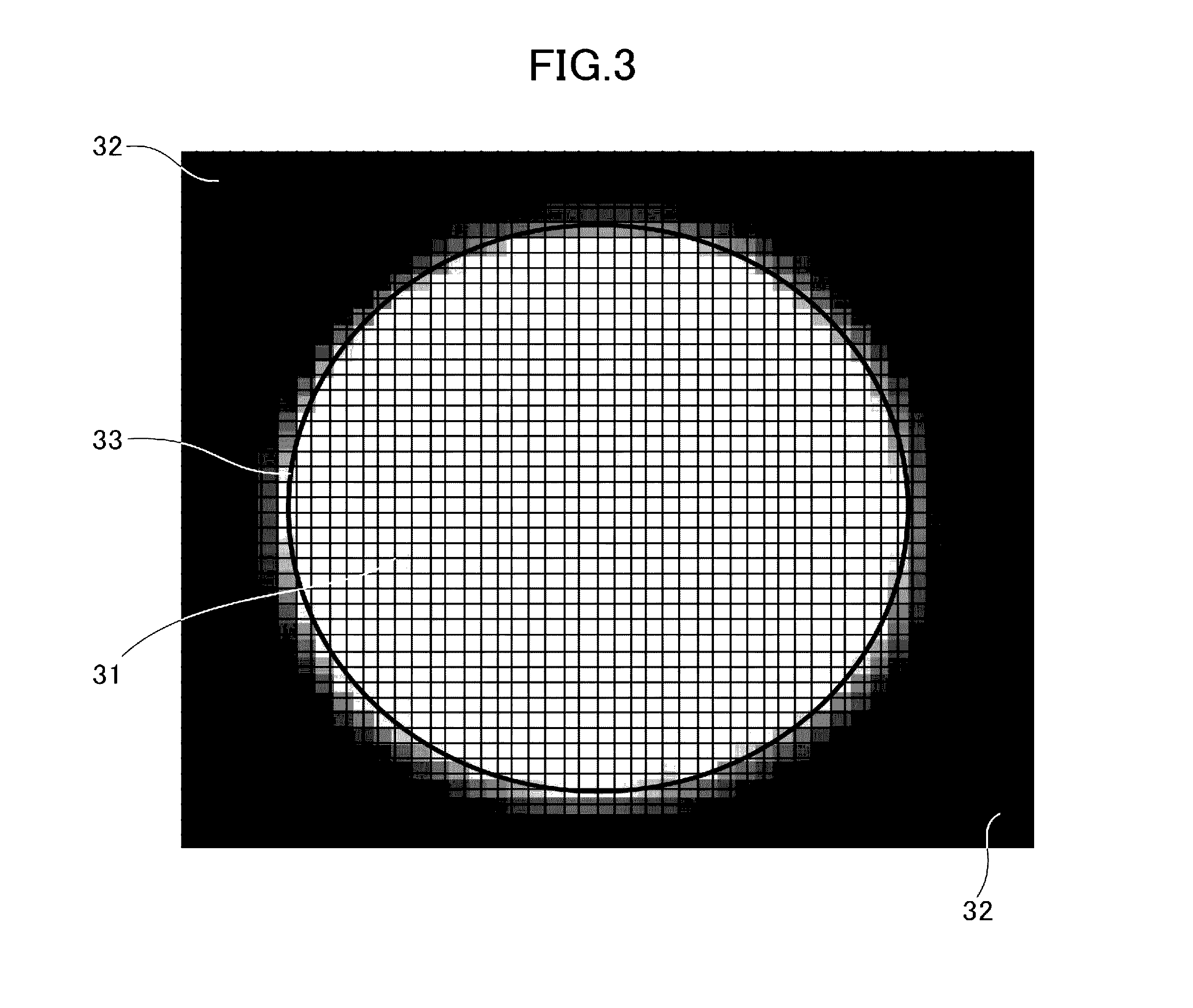Image reading method
a fluorescence image and image technology, applied in the field of fluorescence image reading, can solve the problems of difficulty in and achieve the effect of accelerating the detection process and reducing the volume of detection data
- Summary
- Abstract
- Description
- Claims
- Application Information
AI Technical Summary
Benefits of technology
Problems solved by technology
Method used
Image
Examples
Embodiment Construction
[0065]First, terms used in the present application are described.
[0066]A fluorescence image of a biochip as shown in FIG. 1 corresponds to a specimen where multiple regions emit fluorescence, that is, an example of “a specimen where multiple regions are observed to emit fluorescence in different intensities.” In biochip 11, multiple regions 12 to emit fluorescence are arranged two-dimensionally, and the fluorescence emitted from each region varies in intensity from weak to strong. The size and shape of each region and the number and pitch of regions are not limited specifically.
[0067]As for a “biochip,” numerous probes are independently immobilized on a carrier to make a high-density array. A biochip is not limited to a specific type as long as probes (such as oligonucleotide probes) are immobilized on a carrier.
[0068]The type of biochip is not limited specifically, either; for example, a biochip shaped as a plate, rod, beads or the like may be used. When a planar carrier is used, p...
PUM
| Property | Measurement | Unit |
|---|---|---|
| time | aaaaa | aaaaa |
| exposure time | aaaaa | aaaaa |
| fluorescence | aaaaa | aaaaa |
Abstract
Description
Claims
Application Information
 Login to View More
Login to View More - R&D
- Intellectual Property
- Life Sciences
- Materials
- Tech Scout
- Unparalleled Data Quality
- Higher Quality Content
- 60% Fewer Hallucinations
Browse by: Latest US Patents, China's latest patents, Technical Efficacy Thesaurus, Application Domain, Technology Topic, Popular Technical Reports.
© 2025 PatSnap. All rights reserved.Legal|Privacy policy|Modern Slavery Act Transparency Statement|Sitemap|About US| Contact US: help@patsnap.com



